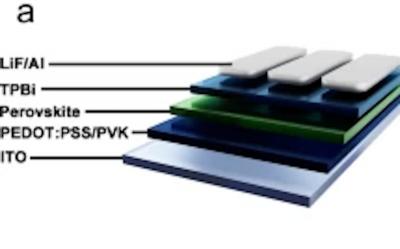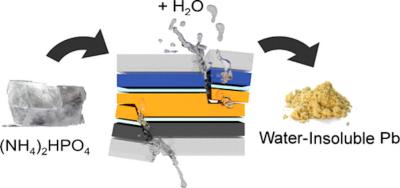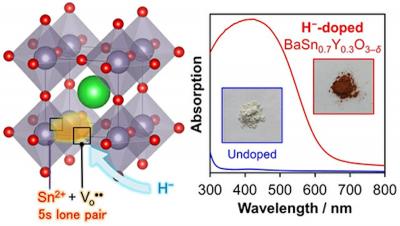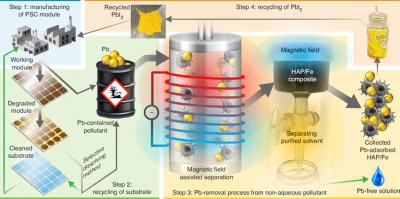Researchers design efficient germanium-lead perovskite LEDs
A research team, led by Prof. Di Dawei from the Zhejiang University College of Optical Science and Engineering, recently discovered that by using germanium (Ge), an environmentally friendly group-IV element, to partially substitute lead in the perovskite, it is possible to create highly luminescent perovskite materials and devices.
 Schematic of the Ge'Pb PeLED device structure. Image from Nature Communications
Schematic of the Ge'Pb PeLED device structure. Image from Nature Communications
To resolve the toxicity problem that arises from the use of lead, an effective method has been the use of tin (Sn) as a partial or full replacement of lead in the perovskite materials. This strategy has been particularly successful for perovskite solar cells. However, tin-based (including tin-lead) perovskite materials are generally very poor light emitters, causing unsatisfactory performance of tin-based perovskite light-emitting devices (LEDs).


